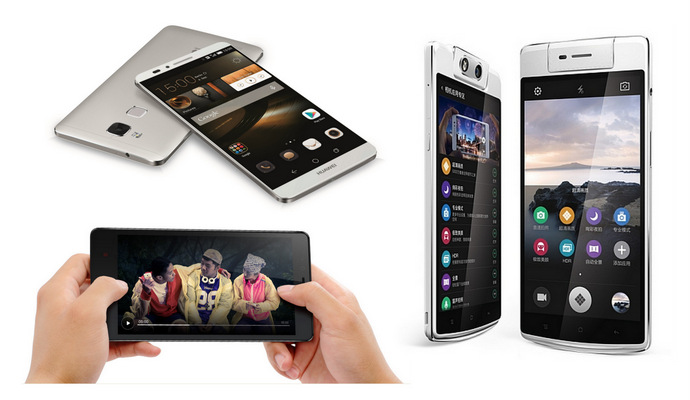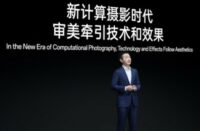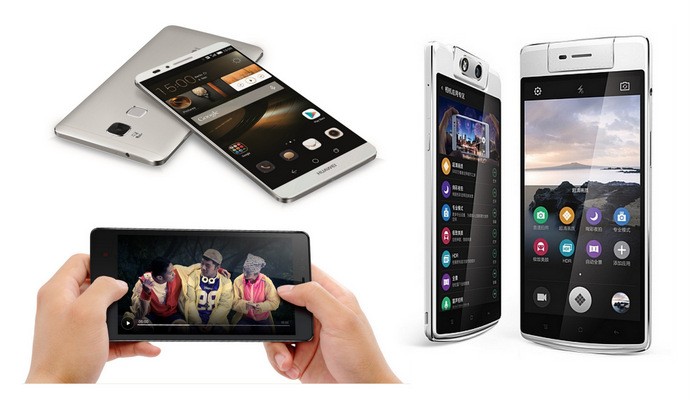
Our latest tech gadget contributor, JF Susbielle has tested three large screen smartphones from China. In this article, he shares why Samsung and Apple should be very worried.
When Samsung launched the first version of its Galaxy Note model in October 2011, it had people wondering: How can anyone plant such a large device against his ear? Is it a phone? Is it a tablet?
No, it is a phablet! And to qualify in the new category, the screen size (diagonal) must be equal or larger than 5.5”. How much larger? The Sony Xperia Z Ultra and its 6.4” screen seems over-stretched and 6” appears a more reasonable north limit.
Three years later, the phablet is the fastest growing segment of the smartphone market, especially popular in Asia.
October last, the two leaders presented their new phablets: the Galaxy Note 4 from Samsung, and iPhone 6 Plus, Apple’s first entry in the phablet scene. Who can compete with these two blockbusters? HTC (Taiwan)? LG (Korea)? Sony (Japan)? The real threat now comes from China.
Xiaomi Redmi Note 4G
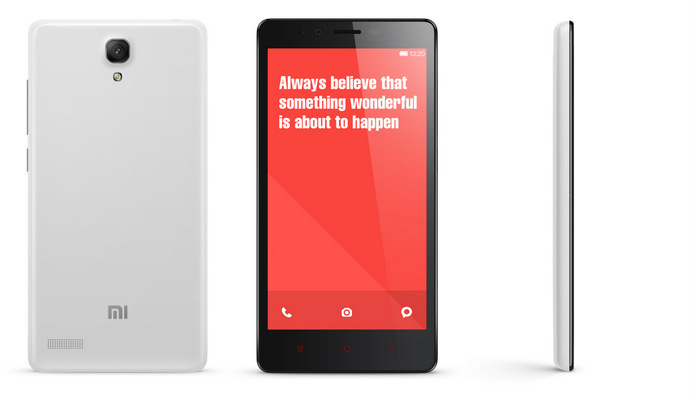
A mid-range 5.5” phablet with 720p resolution, a Quad-core 1.6GHz processor, and a 13 MP camera. Dual SIM with SD card slot.
Think about it! Four years ago, Xiaomi (mandarin for millet, a popular porridge cereal in China) didn’t exist! Today, the company is world #3 smartphone manufacturer, just behind Samsung and Apple. And CEO Lei Jun has a plan: he wants to become #1, soon.
Xiaomi is dubbed “the Apple of the East”. And it is not a coincidence. The inspiration comes straight from Cupertino California, starting from the user’s interface MIUI5 and its large Apple-like icons. In fact, the Redmi Note could be described as an iPhone 6 Plus C referring to the C plastic version of the iPhone5.
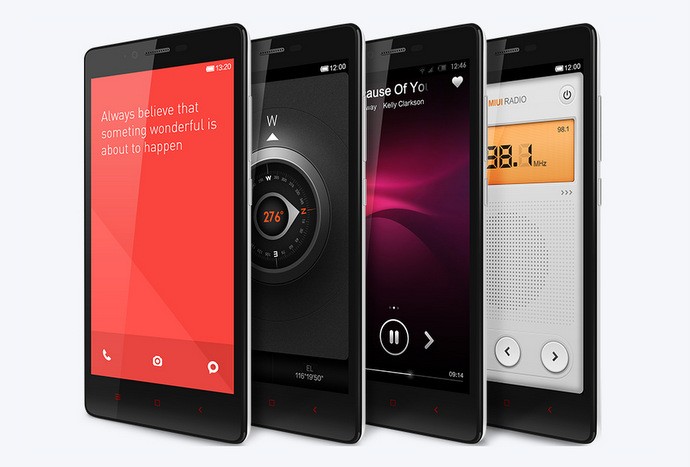
Unboxing is somewhat deceptive. The packaging is made of rough cardboard with no ear-piece in sight. But the phone itself doesn’t disappoint. The Redmi Note is a solid device, a little heavy though at 202g compared to 176g for the Samsung Galaxy Note 4 or 172 g of the iPhone 6 Plus.
Can one really get the Apple experience for a quarter of the price? Well… Overall operation is rather fast. Screen, though 720p only is perfectly fine with 267dpi (your eye cannot see more then that anyway). And you get FM radio onboard, a useful function that the big boys do not include in their flagships.
The camera might disappoint if you are used to the snappy iPhone shooters. Image is decent but operation lags a bit. The battery will keep you going a full day but won’t give you the extended mileage of Samsung’s and Apple’s latest productions.
Verdict: considering the Redmi Note is “given” free with even the cheapest SS40+ contract, the Xiaomi’s phablet is without hesitation the best pick.
Huawei Ascend Mate 7
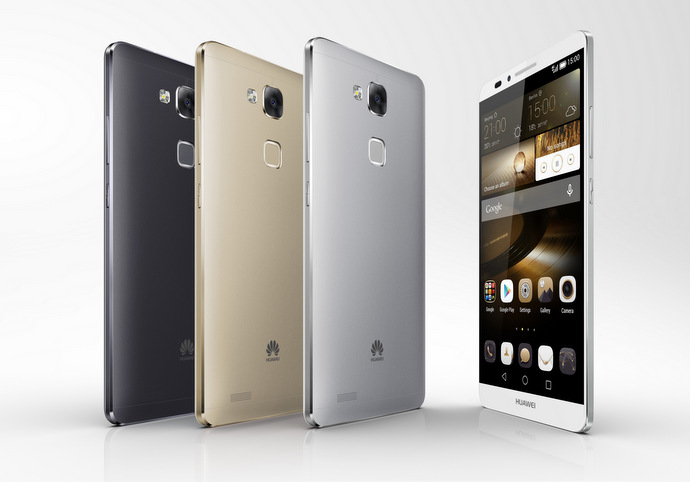
A high-end 6” phablet with 1080p resolution, an octa-core Huawei-made chip and a 13MP camera. SD card slot and fingerprint scanner.
Huawei, a world network equipment giant doesn’t need an introduction. Not surprisingly, they also want to reach the #1 spot.
A single glance at the Mate 7 and you know it’s a high-end device ready to give Samsung and Apple a run for their money. Everything here is top notch. The design first, a gorgeous all-metal body around a 6” IPS LCD display with 1080p resolution (365 dpi, more than the eye can see). Only Samsung and its superior AMOLED technology (5.7” on the Note 4) retains an edge over the Mate 7 display.
This time the inspiration looks to come from the HTC One, arguably the best designed phone on the market.
At 6”, the screen is wonderfully large and comfortable, but thanks to super thin bezels, the Mate 7 is the size of the iPhone 6 Plus which carries a 5.5” screen only. And at 185g, the weight is kept under control (9g more than Samsung Galaxy Note 4). Well done Huawei.
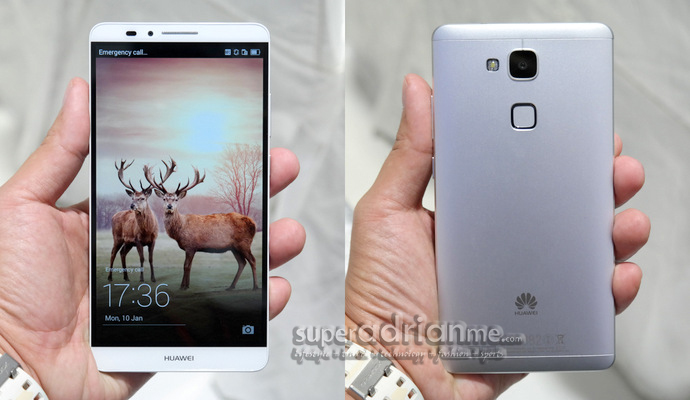
The company’s octa-core chip provides ample processing power. The device is fast, smooth and a pleasure to use, including the camera section with feature-rich menus and fast operation.
The Mate 7 has a lot of goodies under its hood like an FM radio, an excellent and useful fingerprint sensor (to protect your data, apps or pay online) or the capability to snap a photo by pressing twice the volume button or the ear-piece button.
About the battery life. When Samsung and Apple promise some 9 hours of web browsing, the 4100 mAh of the Huawei Ascend Mate 7 actually delivers a whopping 12 hours of multimedia. Why does it matter? Because if your phone becomes your main camera when you go on holidays, you will need the extra juice to keep you shooting pix and selfies the whole day without carrying a charger. And an Ultra Power Saving mode extracts even more runtime from the last 10% of your battery.
Verdict: a larger 6” screen, 3 hours more battery life in a premium, elegant and compact metal body for S$300 less than the best flagships! Now the choice is yours.
Also from Huawei
- The older version of Ascend Mate 2, is the undisputed world record holder of battery life with more than 14 hours of multimedia use. A great value for money.
- The Ascend G7 is much cheaper than the Mate 7, with 720p and 5” screen.
- Just announced in China, the Huawei GX1 is a mid-range cheaper version of a 6” phablet sold around USD 225.
- Just announced, the Huawei Honor 6 Plus is a 5” phablet with dual camera system at the back.
Oppo N3
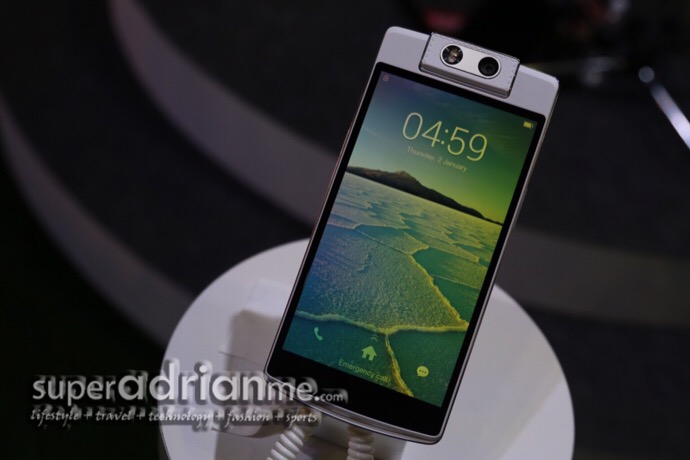
A high-end 5.5” phablet with 1080p displaywith an original 16MP rotating camera.
Oppo chose Singapore to world premiere the launch of its latest N3 model on October 29th 2014.
The Oppo N3 follows in the footsteps of last year’s N1 with an improved and mature version of their rotating camera concept.
A rotating camera? All phones have two cameras. A main at the back with high resolution somewhere between 8 and 20MP, and one in the front with lower res (usually 2MP) for selfies.
But with the recent craze for selfies, manufacturers are upgrading the front camera. HTC for instance has equipped its Desire Eye with two identical 13MP cameras.
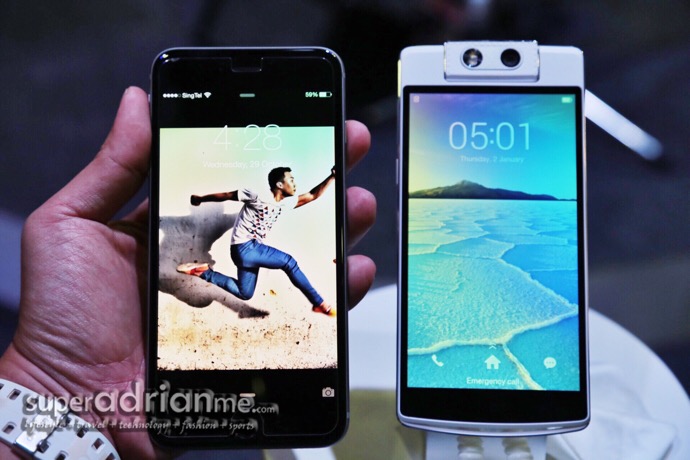
But Oppo has come up with an original, simple and creative idea: a rotating camera that can face back or front! Clever.
The Oppo is a powerful 5.5” phablet with 1080p HD display, fingerprint sensor, 32GB of internal memory and battery rapid charge technology (up to 75% charge in 30mn).
Definitely a high-end phone with great looks and build quality.
But obviously the center piece is obviously the camera. It is fitted with a 16MP sensor the same size as compact cameras (1/2.3”) and larger pixels (1.34µm) than other phones.
The camera module is motorised and can rotate 206 degrees back and front. It can even track your subject while shooting video.
Only trade-off is a slightly heavier and taller device at 192g (18g more than the Note4)
The Oppo N3 is a premium phone that carries a USD649 in China.
Also from Oppo
– Oppo Find7 has a QHD 5.5” display (1440 x 2560 pixels) and a conventional camera at a lower price.
Other phablets from China
You might also want to check these other devices from China
- OnePlus One: a 5.5” high-spec phablet dubbed “flagship killer” by market analysts;
- Vivo Xplay 3S is another 6” high-end phablet with QHD screen and fingerprint sensor.
- Lenovo Vibe Z2 Pro has a 6” QHD (1440 x 2560 pixels) screen and a 7.7mm thin metal body, a 16MP camera with OIS, and a large 4,000 mAh battery.
- ZTE Nubia Z7 is another 5.5” QHD display and a 13MP Sony Exmor RS sensor and OIS
About the Writer
 JF Susbielle is an IT engineer and consultant. He has written among the first technical books on Internet technologies, specialising in Voice over IP, terminals and services. JF was involved in many large Internet projects with MNCs in Europe and Asia. He has been monitoring the evolution of Internet devices and applications for the last 20 years
JF Susbielle is an IT engineer and consultant. He has written among the first technical books on Internet technologies, specialising in Voice over IP, terminals and services. JF was involved in many large Internet projects with MNCs in Europe and Asia. He has been monitoring the evolution of Internet devices and applications for the last 20 years

